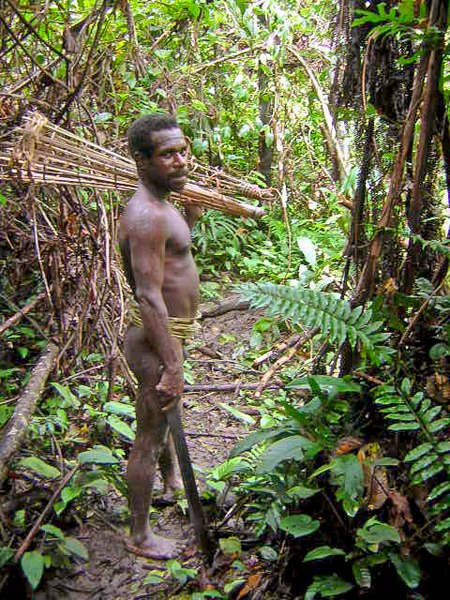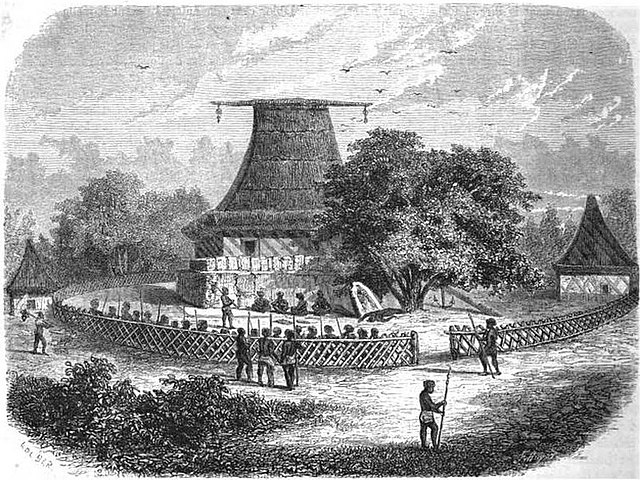Cannibalism in Oceania is well documented for many parts of this region, with reports ranging from the early modern period to, in a few cases, the 21st century.
Some archaeological evidence has also been found.
Human cannibalism in Melanesia and Polynesia was primarily associated with war, with victors eating the vanquished, while in Australia it was often a contingency for hardship to avoid starvation.
A cannibal feast on Tanna, Vanuatu, c. 1885–1889
Daisy Bates with a group of Aboriginal women, circa 1911
Korowai people of New Guinea practised cannibalism until very recent times
Scene from outside a Fijian bure kalou (temple) with a victim about to be consumed – drawing by Alexandre de Bar (c. 1860)
Acts of cannibalism in Africa have been reported from various parts of the continent, ranging from prehistoric times until the 21st century. The possibly oldest evidence of human cannibalism has been found in Kenya in eastern Africa. There is little evidence of later cannibalism in East Africa, but the Ugandan dictator Idi Amin was reputed to practise it, and acts of voluntary and forced cannibalism have been reported from the South Sudanese Civil War.
While the oldest known written mention of cannibalism is from the tomb of the Egyptian king Unas, later evidence from Egypt shows it to only re-appear during occasional episodes of severe famine.
Sarcophagus and funerary chamber in the Pyramid of Unas, where the Cannibal Hymn was found
A sculpture by Paul Wissaert depicting a leopard man, 1913
An Igbo market, photographed by George Basden in the early 20th century
Royal canoe of the Kingdom of Bonny, 1890








